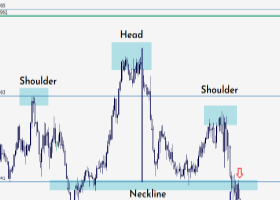Yes friends, a self learning EA. Isnt it great to be a software developer? free to create things beyond imagination. Now lets learn some variables and see how its done.
Here's a simplified example of a self-learning Expert Advisor (EA) using a simple machine learning algorithm called K-Nearest Neighbors (KNN) for classification. Did you know about it? This code demonstrates the basic structure and concept, but keep in mind that real-world implementation would require more sophisticated techniques and extensive testing.
// Self-Learning Expert Advisor using K-Nearest Neighbors (KNN) // Define input parameters input int k = 5; // Number of nearest neighbors to consider // Declare global variables int learningPeriod = 100; // Number of bars for initial learning bool isLearningCompleted = false; double[] features; int[] labels; // Expert Advisor initialization function int OnInit() { // Initialize arrays for features and labels ArrayResize(features, learningPeriod); ArrayResize(labels, learningPeriod); return INIT_SUCCEEDED; } // Expert Advisor tick function void OnTick() { // Check if learning is completed if (!isLearningCompleted && Bars >= learningPeriod) { Learn(); isLearningCompleted = true; } // Check if we have enough data for classification if (isLearningCompleted && Bars > learningPeriod) { // Extract current features double currentFeature = CalculateFeature(); // Classify the current feature int predictedLabel = Classify(currentFeature); // Implement trading logic based on the predicted label if (predictedLabel == 1) { // Open a buy position OrderSend(Symbol(), OP_BUY, 0.01, Ask, 3, 0, 0, "Self-Learning EA"); } else if (predictedLabel == -1) { // Open a sell position OrderSend(Symbol(), OP_SELL, 0.01, Bid, 3, 0, 0, "Self-Learning EA"); } } } // Learning function void Learn() { // Collect features and labels during the learning period for (int i = 0; i < learningPeriod; i++) { features[i] = CalculateFeature(); labels[i] = GetLabel(); Sleep(100); // Introduce a delay to simulate real-time data collection } } // Classification function using K-Nearest Neighbors (KNN) int Classify(double currentFeature) { double[] distances; ArrayResize(distances, learningPeriod); // Calculate distances to each known feature for (int i = 0; i < learningPeriod; i++) { distances[i] = MathAbs(features[i] - currentFeature); } // Sort distances in ascending order ArraySort(distances); int positiveVotes = 0; int negativeVotes = 0; // Count the votes of k nearest neighbors for (int i = 0; i < k; i++) { int nearestIndex = ArrayBsearch(distances, distances[i]); if (labels[nearestIndex] == 1) positiveVotes++; else if (labels[nearestIndex] == -1) negativeVotes++; } // Determine the majority vote if (positiveVotes > negativeVotes) return 1; else if (negativeVotes > positiveVotes) return -1; else return 0; // No clear decision } // Function to calculate a feature value double CalculateFeature() { // Implement your custom feature calculation logic here // This can include technical indicators, statistical measures, etc. // For demonstration purposes, a random feature is generated return MathRand(); } // Function to get a label (buy/sell signal) int GetLabel() { // Implement your custom labeling logic here // This can be based on price movements, trend indicators, etc. // For demonstration purposes, a random label is generated int random = MathRand() % 2; if (random == 0) return -1; // Sell signal else return 1; // Buy signal }
Now we need to look at functions and variables used here:
In this example, the EA collects features and labels during the initial learning period ( learningPeriod ), right. After the learning period, it starts making predictions using the KNN algorithm based on the current feature value. The CalculateFeature()function represents the feature extraction process, and the GetLabel()function simulates labeling for demonstration purposes.
Please note that this is a simplified example, and real-world implementation of a self-learning EA requires careful consideration of feature selection, data preprocessing, advanced machine learning algorithms, model evaluation, and risk management techniques.
Make sure to thoroughly test and validate any algorithmic trading strategies before deploying them in live trading.
Enjoy it and have fun.


